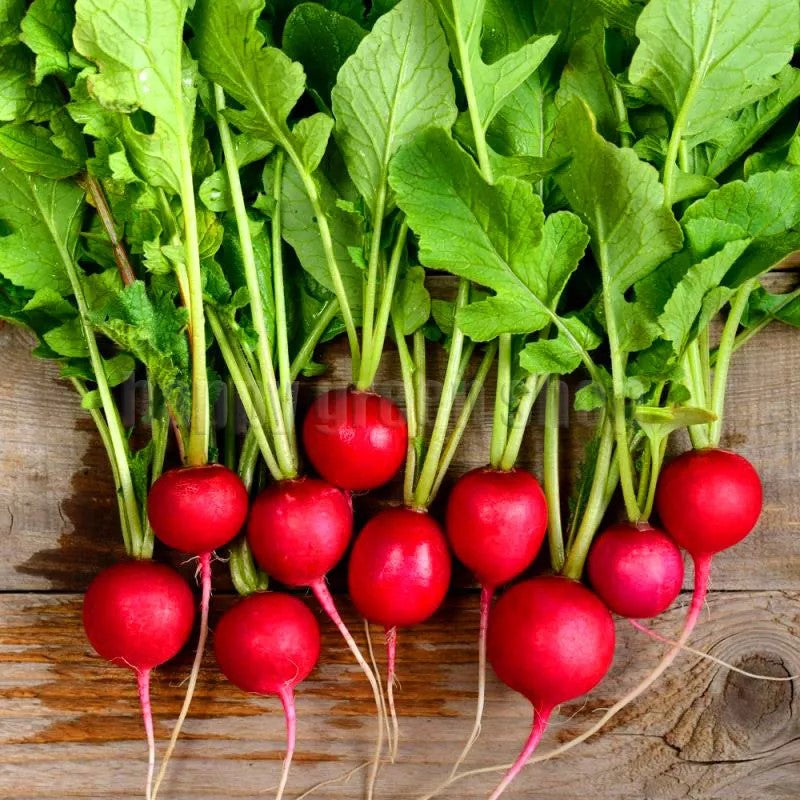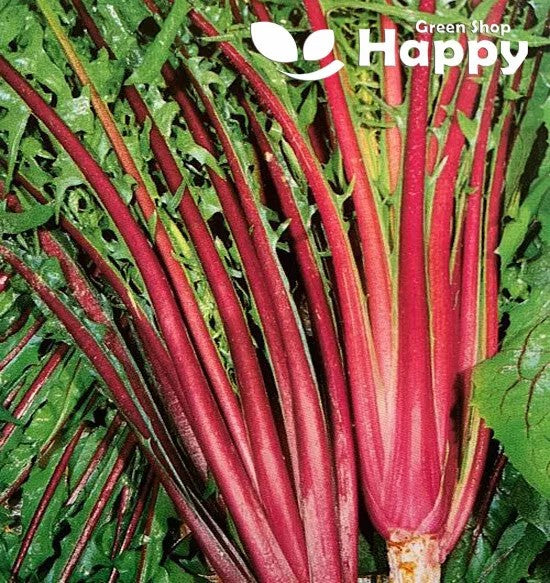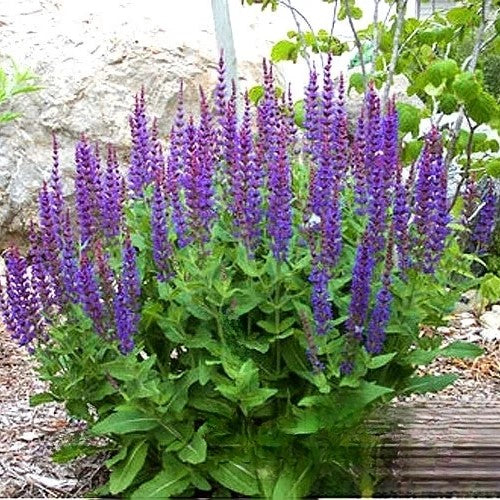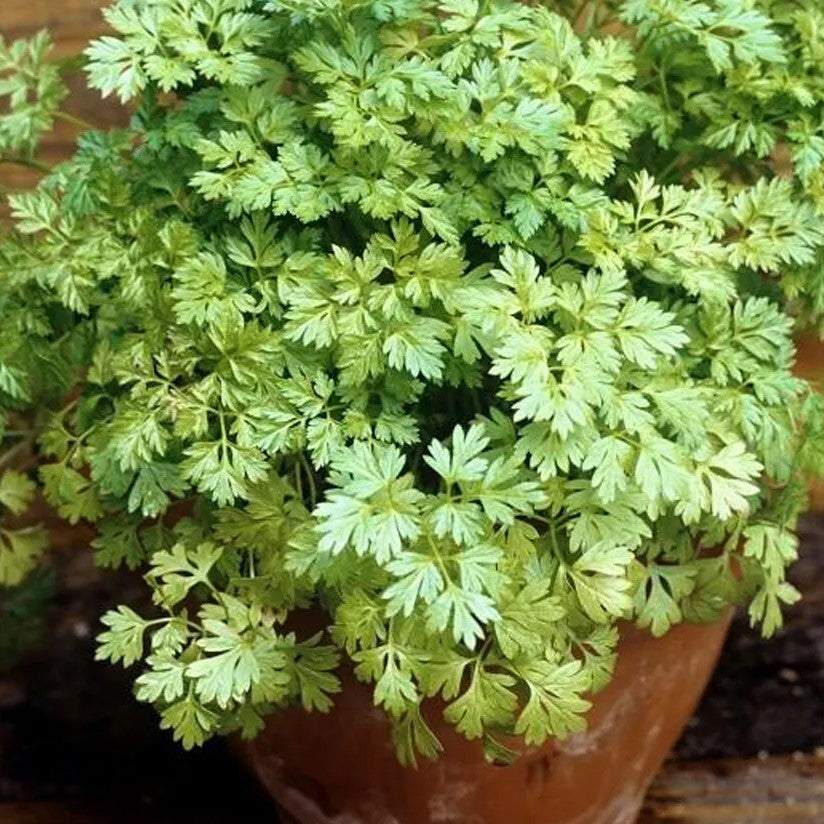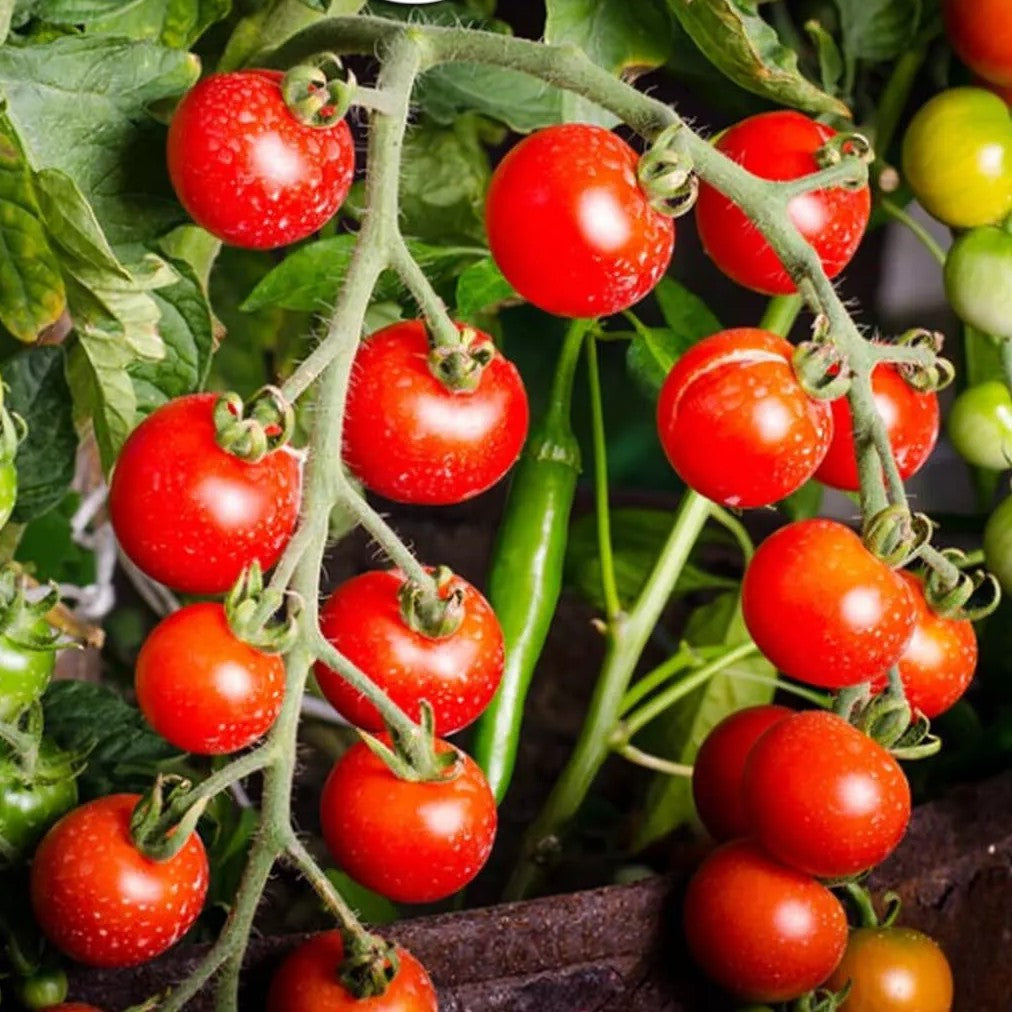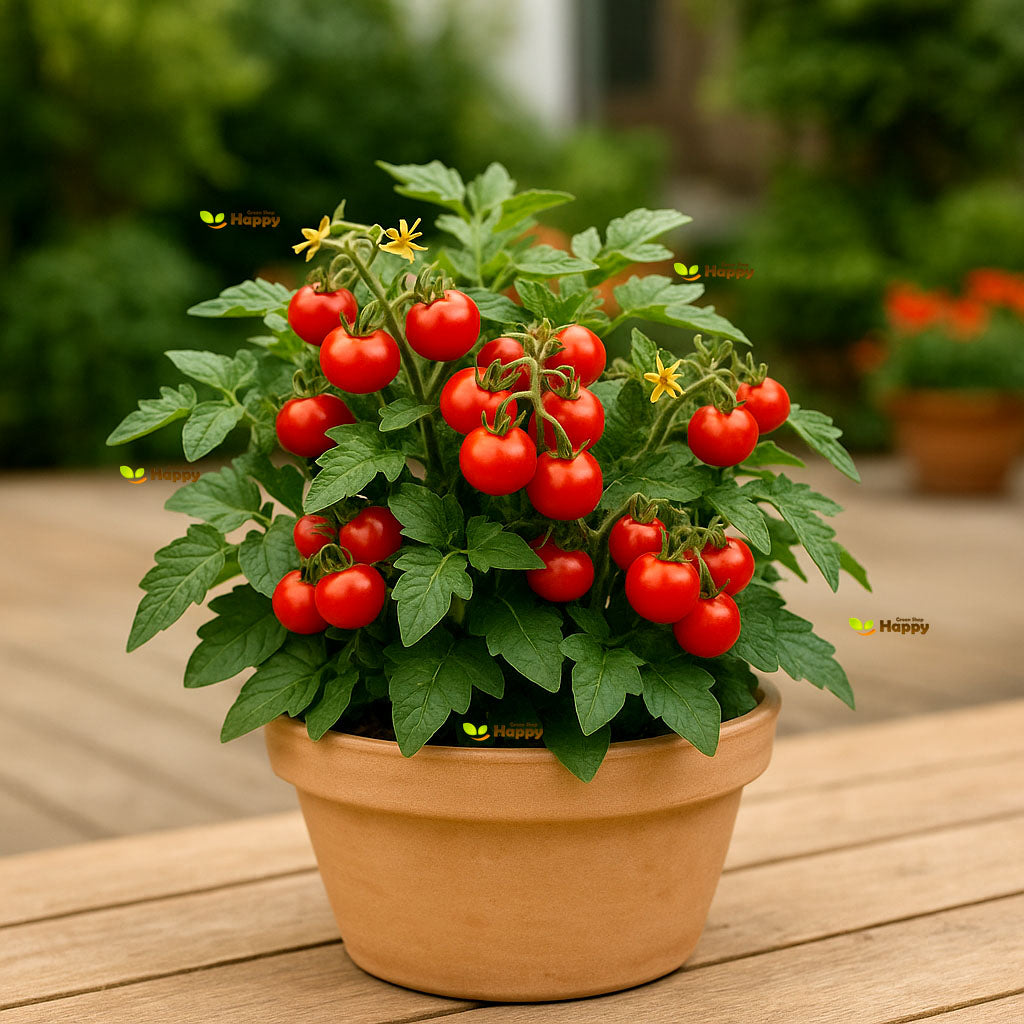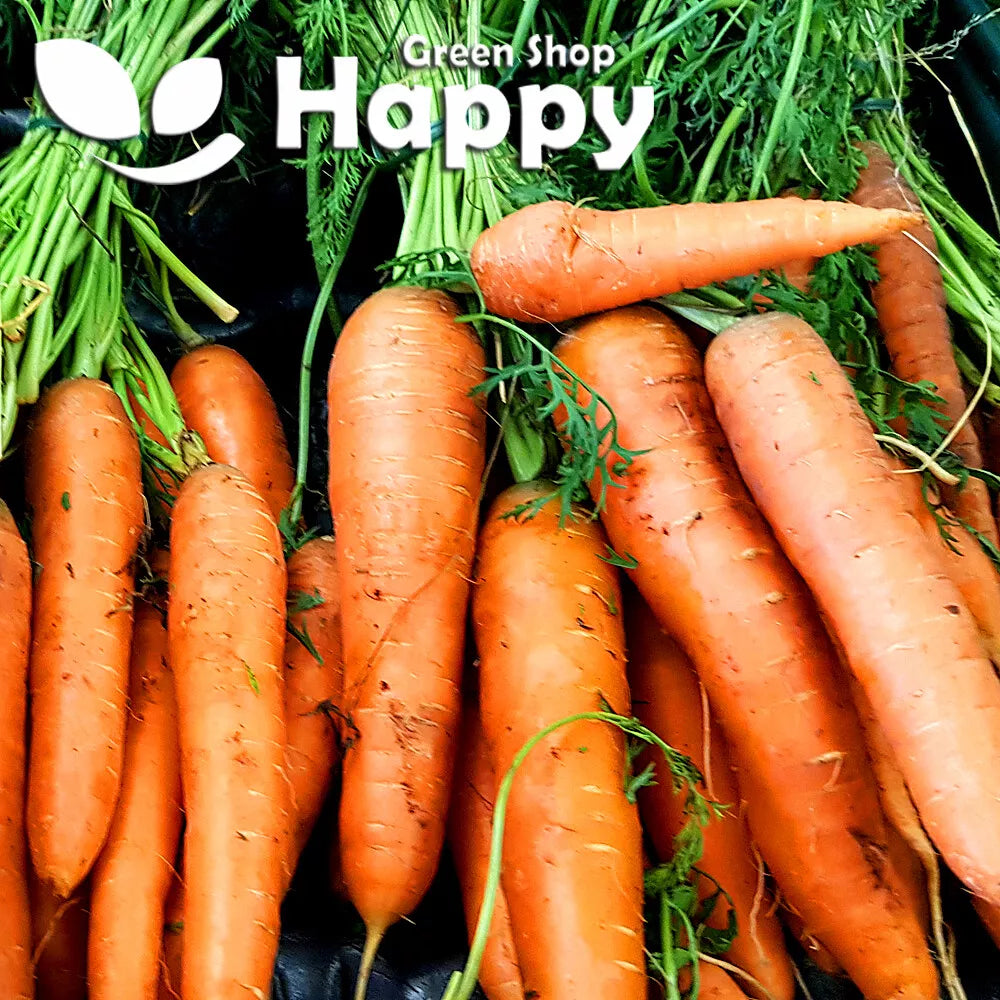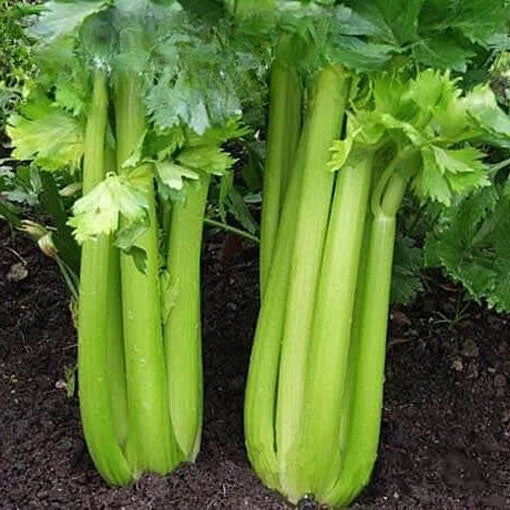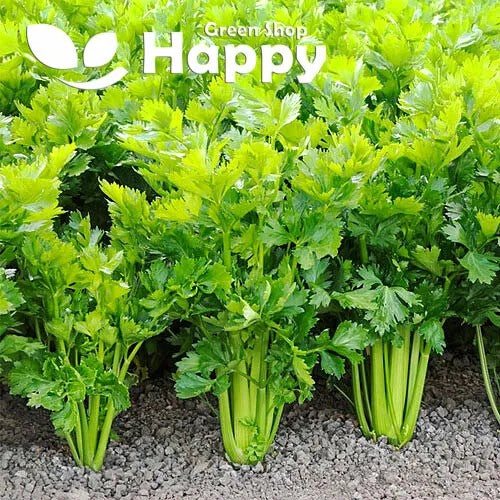Sort by:
225 products
225 products
Chinese Cabbage 'Hilton' – Seeds (Brassica oleracea)
Chinese Cabbage 'Hilton' is a highly productive, reliable variety that produces large, barrel-shaped heads with crisp, pale green leaves and a sweet, mild flavor. Popular in Asian cuisine, it’s perfect for stir-fries, soups, salads, and traditional dishes like kimchi.
Fast-growing and versatile, 'Hilton' is ideal for both spring and late-summer sowings, offering gardeners a quick and rewarding crop.
How to Grow
. Sow indoors from March to May or directly outdoors from April
. For autumn crops, sow again from July to August
. Space plants 30–40 cm apart in fertile, moist soil
. Prefers cooler growing conditions for best results
. Protect young plants from pests such as flea beetles
Key Features
. Large, dense heads of sweet, tender leaves
. Quick-growing variety, ready in 60–75 days
. Excellent for stir-fries, salads, soups, and kimchi
. Can be grown in spring or late summer for staggered harvests
. High yields and reliable performance
Sowing & Harvest
. Sow from March to May or July to August
. Harvest from June to October
Short Tip
For the best flavor, harvest before heads become too mature, as older leaves can turn bitter.
Chicory Baby Leaf 'Italico Rosso' – Seeds (Cichorium intybus)
Add vibrant color and a tangy bite to your salads with Chicory Baby Leaf 'Italico Rosso'. This Italian variety is known for its deep red, slender leaves and pleasantly bitter flavor that balances perfectly with milder greens. Fast-growing and easy to harvest as baby leaves, it is a staple for gourmet salad mixes and year-round growing.
How to Grow
. Sow directly outdoors or under cover from March to September
. Scatter thinly and cover lightly with soil, keeping moist until germination
. Harvest young leaves at 5–10 cm for baby salad mixes
. For cut-and-come-again harvests, trim leaves regularly to encourage regrowth
. Prefers fertile, well-drained soil in sun or partial shade
Key Features
. Italian chicory with striking red baby leaves
. Distinctive tangy, slightly bitter flavor
. Quick to mature, harvestable in weeks
. Perfect for cut-and-come-again cropping
. Adds texture and color to gourmet salads
Ideal For
. Fresh salad mixes
. Gourmet dishes and Italian cuisine
. Cut-and-come-again harvesting
. Gardeners seeking unique leafy greens
Sowing & Harvest
. Sow: March – September
. Harvest: April – October
Quick Tip
Mix 'Italico Rosso' with milder lettuces and rocket for a balanced, colorful salad bowl.
Chia – Seeds (Salvia hispanica)
Chia (Salvia hispanica) is an ancient superfood crop, grown for its tiny black seeds packed with nutrition. Rich in omega-3 fatty acids, fiber, protein, and antioxidants, chia seeds are a versatile kitchen staple, perfect for smoothies, puddings, baked goods, or simply sprinkled over salads and yogurt. Easy to grow, chia is a fast-developing annual that also produces delicate blue-purple flowers, making it both useful and ornamental.
How to Grow
-
Sow indoors or outdoors: April – June in warm soil or pots.
-
Soil: Well-drained, light soil in full sun.
-
Spacing: 25–30 cm apart.
-
Water lightly but regularly until plants are established.
-
Harvest seeds when flower heads dry and turn brown.
Key Features
-
Ancient superfood crop
-
Tiny seeds rich in omega-3, fiber, and protein
-
Easy to grow annual with purple-blue flowers
-
Dual-purpose – edible and ornamental
-
Perfect for smoothies, puddings, and baking
Ideal For
-
Kitchen gardens and health-conscious growers
-
Smoothie bowls, baking, and healthy snacks
-
Gardeners looking for edible flowers and seeds
Sowing & Harvest
-
Sow: April – June
-
Harvest: September – October
Quick Tip
For best germination, sow chia in warm soil or start indoors on a sunny windowsill. Harvest seeds by gently shaking dried flower heads.
Chervil – Seeds
(Anthriscus cerefolium) – Classic Culinary Herb
Chervil is a delicate, aromatic herb with finely cut, fern-like leaves and a subtle aniseed flavor. Often called the “gourmet’s parsley”, it is an essential ingredient in French cuisine and one of the traditional fines herbes (with parsley, tarragon, and chives). Best used fresh, chervil enhances soups, salads, omelets, fish, and sauces, adding a refined, mild flavor.
Key Features
-
Type: Annual culinary herb
-
Height: 30–50 cm
-
Leaves: Finely cut, light green, fern-like
-
Flavor: Mild anise, delicate and fresh
-
Harvest: 6–8 weeks after sowing
-
Use: Fresh leaves for seasoning
Ideal For
-
Culinary herb gardens & kitchen windowsills
-
French and Mediterranean dishes
-
Continuous harvest in small spaces
-
Pairing with parsley, tarragon & chives
Sowing & Growing
-
Sow outdoors: March–August, directly into the soil.
-
Depth: 0.5 cm, thinly in rows 20 cm apart.
-
Germination: 14–21 days at 12–18°C.
-
Position: Partial shade, moist, humus-rich soil.
-
Harvest: Young leaves as needed.
Care Tips
-
Regular sowings every 3–4 weeks ensure a constant supply.
-
Avoid hot, sunny locations (prefers cool shade).
-
Use leaves fresh – drying reduces flavor.
Cherry Tomato 'Rubinka' – Seeds (Lycopersicum esculentum)
The Cherry Tomato 'Rubinka' is a prolific variety producing small, round, bright red fruits with a rich, sweet flavor. Perfect for snacking, salads, roasting, or garnishing dishes, these cherry tomatoes are a favorite for home gardeners and urban growers.
Compact and vigorous, 'Rubinka' plants are suitable for containers, hanging baskets, or garden beds. Its early and abundant yield ensures a continuous supply of flavorful tomatoes throughout the season.
How to Grow
-
Sow indoors: February – April
-
Transplant outdoors: After last frost, spacing 40–50 cm apart
-
Position: Full sun
-
Soil: Fertile, well-drained soil enriched with compost
-
Care: Support plants with stakes or cages; water consistently to prevent cracking
Key Features
-
Small, sweet, bright red cherry tomatoes
-
Early and abundant yield
-
Compact, vigorous plants suitable for containers and gardens
-
Perfect for snacking, salads, and garnishes
-
Easy-to-grow variety for home gardeners
Harvest
-
Harvesting period: 60–75 days after sowing
-
Pick fruits when fully red for best flavor and sweetness.
Short Tip
Regularly harvesting ripe fruits encourages continuous production and prevents overripening.
Cherry Tomato “Minibel” – 40 Seeds (Solanum lycopersicum)
Description:
Grow sweet, bite-sized cherry tomatoes with “Minibel” (Solanum lycopersicum). This compact, high-yielding variety produces clusters of bright red, flavorful tomatoes ideal for salads, snacking, and garnishing. Perfect for containers, greenhouses, or small garden spaces, Minibel is easy to grow from seed and provides continuous harvests throughout the summer. A must-have for home gardeners seeking fresh, delicious cherry tomatoes.
Key Features
-
Compact, high-yielding cherry tomato variety
-
Bright red, sweet, and flavorful fruits
-
Continuous harvest from summer to early autumn
-
Ideal for containers, greenhouses, and small gardens
-
Easy to grow from seed
Ideal For
-
Containers and balcony planters
-
Greenhouses and small garden beds
-
Salads, snacking, and culinary use
-
Home gardeners seeking fresh, flavorful tomatoes
Sowing & Growing
-
Sow Indoors: February–April
-
Transplant Outdoors: May, after frost
-
Germination: 7–14 days at 20–25°C
-
Spacing: 30–40 cm apart
-
Support: Staking or cages recommended
-
Light: Full sun
-
Soil: Fertile, well-drained
Care Tips
-
Water consistently, keeping soil moist but not waterlogged
-
Fertilize regularly with a tomato or balanced fertilizer
-
Prune lightly to improve airflow and fruit production
-
Harvest when tomatoes are fully red for best flavor
Chantenay Carrot ‘Charisma’ F1 Seeds (Daucus carota)
Grow high-yield, flavorful carrots with Chantenay Carrot ‘Charisma’ F1 (Daucus carota). This uniform, early-maturing variety produces thick, short, orange roots with excellent taste, ideal for fresh salads, cooking, and roasting. Hardy and easy to grow, it’s perfect for kitchen gardens, raised beds, and succession sowing.
How to Grow
-
Sow seeds directly outdoors from early spring to midsummer.
-
Use fertile, well-drained soil in full sun.
-
Sow seeds 1 cm deep and thin seedlings to 5–8 cm apart.
-
Keep soil consistently moist for optimal germination (10–14 days).
-
Harvest roots when fully grown but still tender for best flavor.
Key Features
-
Thick, short, uniform orange roots
-
Early-maturing, high-yield F1 hybrid
-
Sweet and flavorful, perfect for salads, cooking, or roasting
-
Reliable and easy to grow
-
Suitable for succession sowing and continuous harvest
Ideal For
-
Vegetable gardens, raised beds, and allotments
-
Fresh salads, cooking, and roasting
-
Succession sowing for steady harvests
-
Homegrown culinary use
Sowing
-
Best time: Early spring to midsummer outdoors
-
Depth: 1 cm
-
Spacing: Thin to 5–8 cm apart
-
Prefers full sun and fertile, well-drained soil
Quick Tip
-
Sow in successive batches every 2–3 weeks to enjoy a continuous supply of tender, sweet roots.
Celery 'Westland' – Seeds (Apium graveolens)
Celery 'Westland' is a vigorous, reliable variety that produces tall, crisp, and succulent stalks with a mild, aromatic flavor. It is well-suited for both home gardens and market growing, offering consistent yields of high-quality stems. Perfect for use in salads, soups, stews, or as a fresh crunchy snack.
This variety has excellent disease resistance and strong growth, making it one of the most dependable choices for gardeners looking to grow celery successfully.
How to Grow
-
Sow indoors: February – April
-
Transplant outdoors: May – June after hardening off
-
Depth: Surface sow and cover very lightly
-
Spacing: 25–30 cm apart in rows 30–40 cm apart
-
Position: Full sun, sheltered site
-
Soil: Moist, fertile, well-drained with plenty of organic matter
-
Watering: Keep soil consistently moist
Key Features
-
Produces tall, crisp, and aromatic stalks
-
Excellent for fresh eating, cooking, and juicing
-
Strong disease resistance and reliable yields
-
Ideal for home gardeners and allotments
-
Suitable for summer and autumn harvests
Harvest
-
Harvesting period: August – October
-
Cut stems as required for fresh use.
Short Tip
Keep soil consistently moist to prevent celery from becoming tough or stringy.
Celery ‘Utah’ Seeds (Apium graveolens var. secalinum)
Grow crisp, tender stalks with Celery ‘Utah’ (Apium graveolens var. secalinum). This reliable variety produces tall, smooth, green stems with a fresh, mild flavor, perfect for salads, soups, and stews. Known for its disease resistance and consistent quality, it’s a favorite for home gardeners and a must-have in the kitchen garden.
How to Grow
-
Sow seeds indoors 8–10 weeks before the last frost.
-
Use moist, fertile, well-drained soil in full sun.
-
Sow seeds thinly on the surface, pressing gently without covering deeply.
-
Keep soil consistently moist; germination may take 14–21 days.
-
Transplant seedlings outdoors after frost, spacing 25–30 cm apart.
-
Harvest stems when they reach full size but remain crisp.
Key Features
-
Produces tall, smooth, green stalks
-
Crisp texture with a mild, refreshing flavor
-
Excellent for soups, stews, and salads
-
Strong, reliable, and disease-resistant variety
-
Perfect for home gardens and allotments
Ideal For
-
Fresh salads, cooking, and soups
-
Vegetable gardens, allotments, and raised beds
-
Gardeners who want a reliable, easy celery variety
-
Continuous harvesting through the season
Sowing
-
Best time: Indoors 8–10 weeks before last frost
-
Depth: Surface sow, cover lightly
-
Spacing: 25–30 cm apart
-
Prefers full sun and fertile, moist soil
Quick Tip
-
Water regularly and mulch around plants to keep soil cool and prevent stems from becoming tough or stringy.
Showing 189/225



